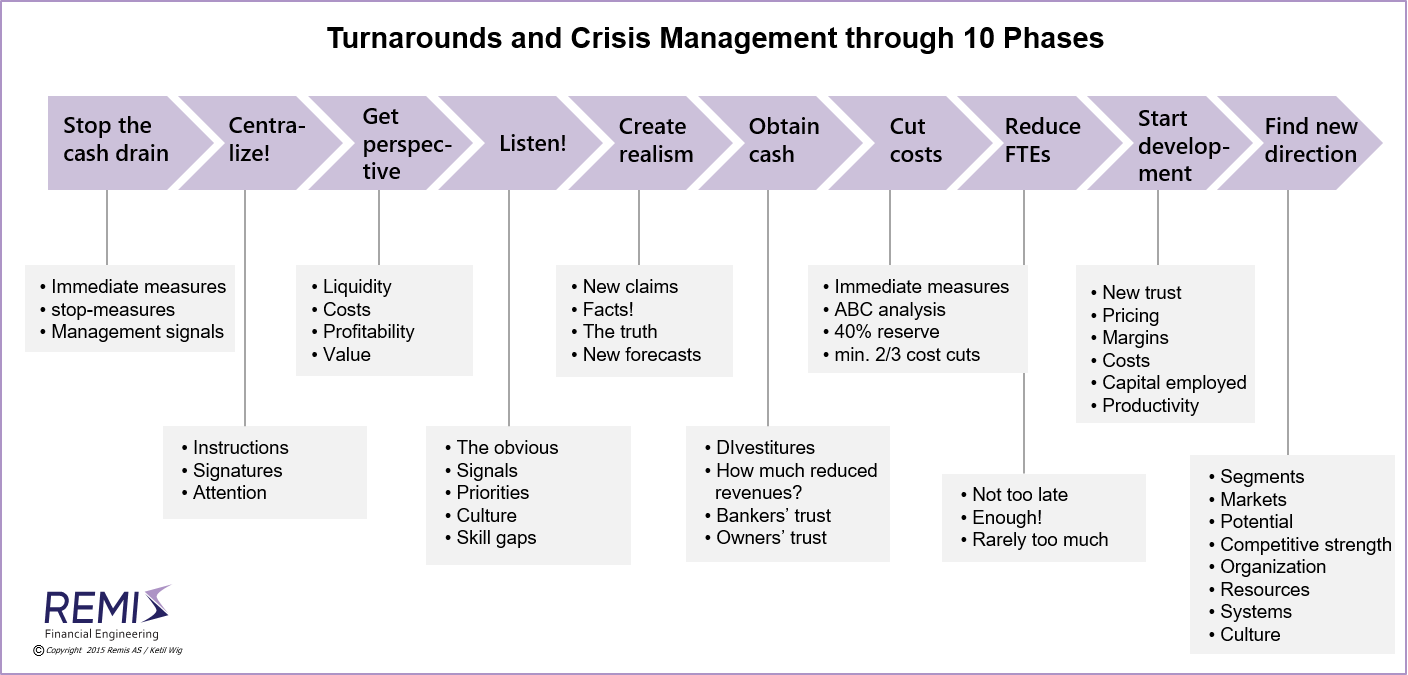Turnarounds and Crisis Management
As a contrast to restructuring projects (being dominated by balance sheet redesign including changes in ownership and financing structure), turnarounds focus on operational redesign: cash generation, cost reductions and profit improvement, reorganization, refinancing and strategic redirection. Handling an immediate liquidity crisis in a high-risk situation is a typical starting point.
Read this article on: Strategic Alliances and JV Partnerships.
Turnarounds are also characterized by the necessity of quickly building trust among a larger (than for a typical restructuring) set of key constituencies, including employees and labor unions (in addition to owners, creditors and banks/corporate lenders).
Turnarounds Have Two Sets of Agendas
Turnarounds usually have a double agenda: Handling a short-term liquidity crisis and cost reductions without significant impacts on strategy and structure, while dealing with a deeper set of priorities. This second agenda can involve irreversible changes to corporate design, product offerings, factory structure and core business units. The deeper agenda is actually a restructuring, but one with clear operational characteristics (for example, through the redesign of a sales or manufacturing organization).A Turnaround Represents Irreversible Change - Requiring Consistency
The below illustration shows a 10-step model for managing a turnaround situation.

As the restructuring part of a turnaround normally represents an irreversible change of strategy, a critical skill of the turnaround team is the ability to set the business on the "right track" in order to ensure consistency between the short-term focus and the building of long-term corporate value (see strategy).
Other Relevant Articles
Also read the separate articles on
Strategy Implementation and the Lack of Results, on
Strategy and the Proper Use of M&A Tools, on
Buy-Side M&A, on
Sell-Side M&A, on
Synergies and Poor Judgment, on
Financial vs. Industrial Ownership, on
Developing High Quality Business Models; on
Equity Based Financing of Start-ups, and on
M&A Process Management.
See Download Center:
White Paper #1:
Post-Merger Integrations - About Synergies and Poor Judgment;
White Paper #3:
Strategy and Implementation - and the Lack of Results;
White Paper #5:
Buy-Side M&A (mergers and acquisitions);
White Paper #6:
Sell-Side M&A (divestitures, trade-sales and mergers); or
White Paper #7:
Should You Choose Financial or Industrial Investors/Owners?;
White Paper #8:
Equity Based Financing of Start-ups and High Growth Situations; or
White Paper #9:
A 15 Step Recipe for Developing Your High-Quality Business Model.
